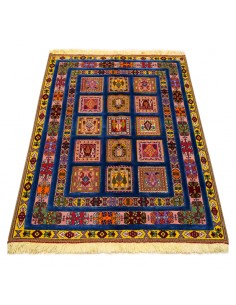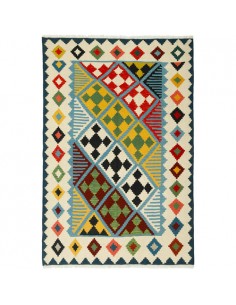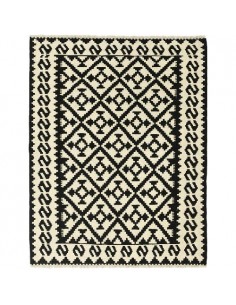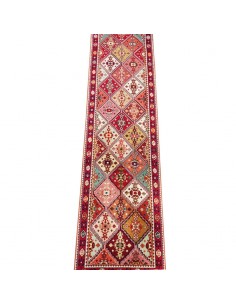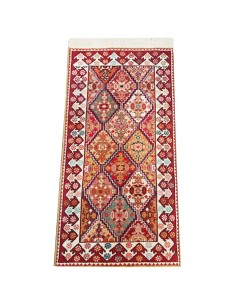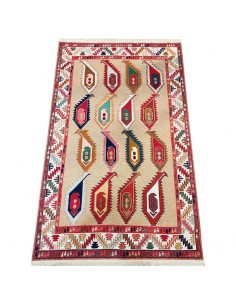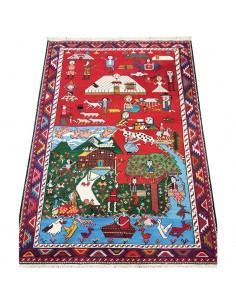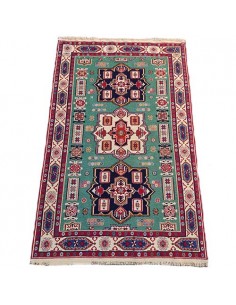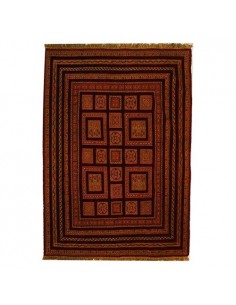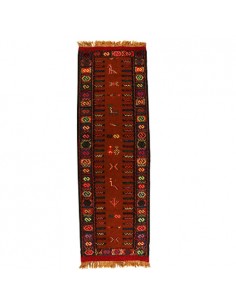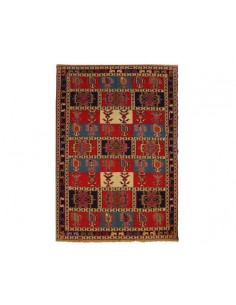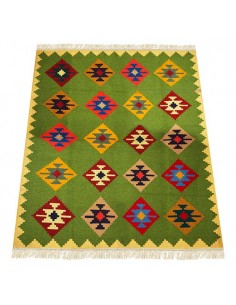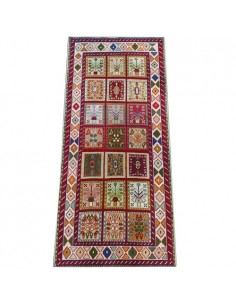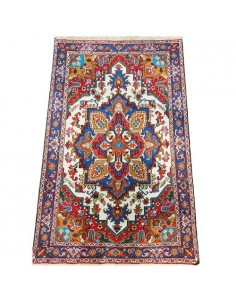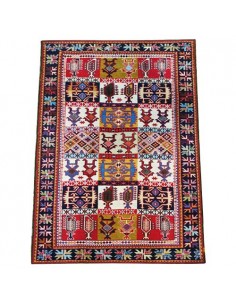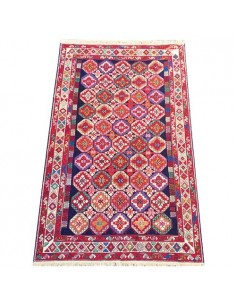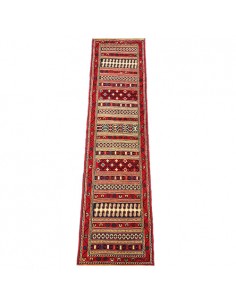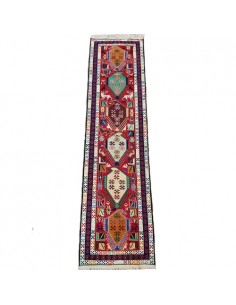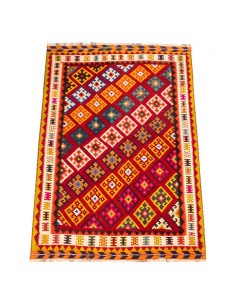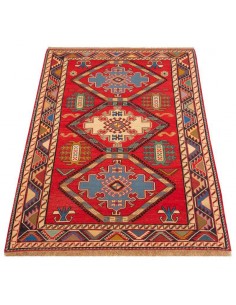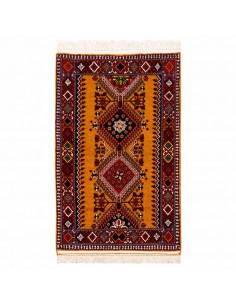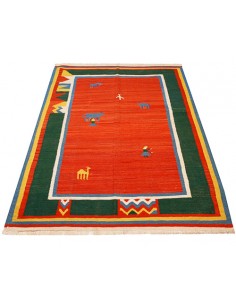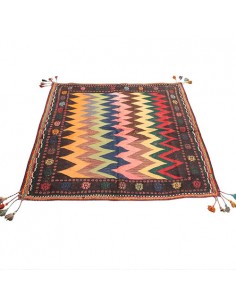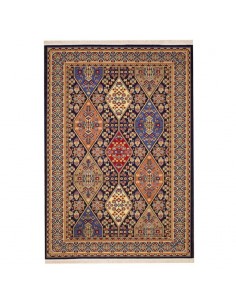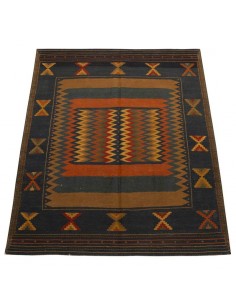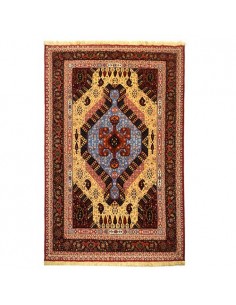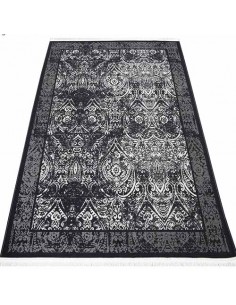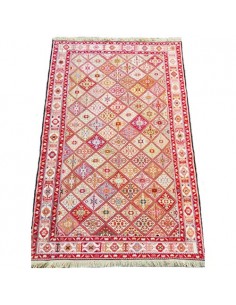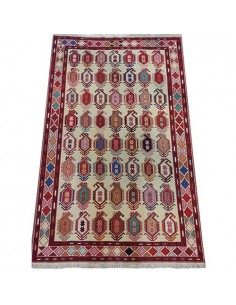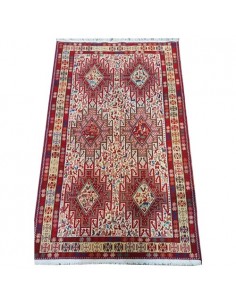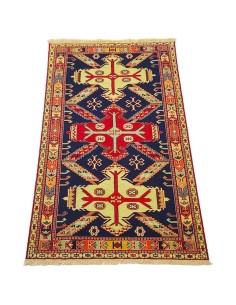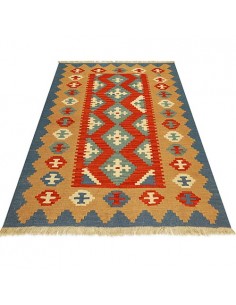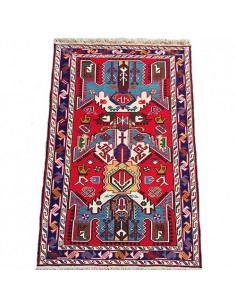Kilim Rugs
A kilim is a thin handwoven floor covering that, unlike a carpet, doesn't have lint. Woven together on a rug loom, the kilim warp is made from goat or sheep wool, cotton, and, sometimes, silk, while the weft is made of dyed animal down or wool. An ancient craft, kilim weaving, has been practiced historically by every woman in nomadic tribes and villages.
Kilim Review, Select, and Shopping Tips
Thanks to their decorative quality, kilims have now found incredible popularity worldwide. In this article, we'll take a deeper look at the history of the kilim and learn about its various types.
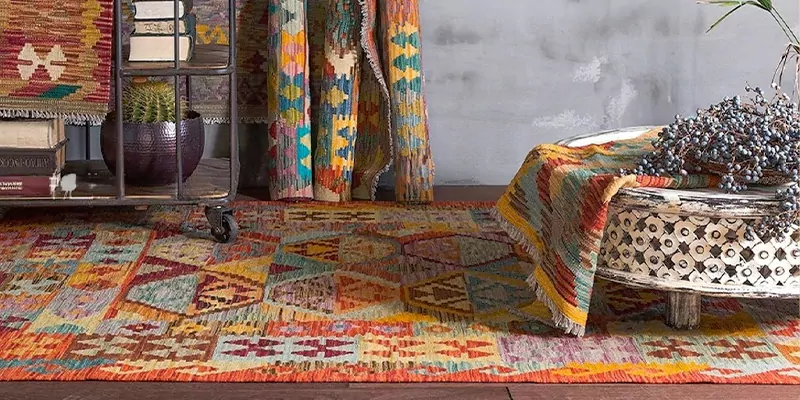
The Art of Adorning Your Home with a Kilim
Once you've procured that exquisite piece of kilim, the subsequent step is to unravel the mystery of its placement and utilization in your dwelling. With their inherent versatility, Kilims can be employed in many ways to infuse warmth and distinctiveness into any space.
Kilim in the Living Room
In the realm of the living room, a kilim can command the spotlight, anchoring the conversation area while injecting a vibrant burst of color and pattern. Position the kilim at the heart of the room, ensuring it possesses ample dimensions to envelop the furniture. Alternatively, experiment by layering a petite kilim atop a larger one, creating a fascinating interplay of textures and visual appeal.
Kilim in the Dining Room
A kilim can lay the foundation beneath the dining table within the dining room, crafting a snug and welcoming ambiance. Opt for a kilim that mirrors the colors and style of your dining room furnishings. Ensure that the rug boasts sufficient size to accommodate the dining chairs, permitting them to be drawn out without snagging on the rug's periphery.
Kilim in the Bedroom
A kilim rug can be draped at the bed's foot, infusing an ambiance of warmth and an intriguing texture into your sanctuary. On the other hand, a daintier kilim can be used as a bedside rug, positioned on either or both sides of the bed, providing a comforting cushion to your feet as you rise to greet the dawn.
History of Kilim Weaving in Iran
Although it's not sure where kilims first appeared, archaeological studies and evidence show that people inhabiting the Iranian Plateau and the neighboring regions were the first to weave kilims. Also, evidence from caves southeast of the Caspian Sea indicates that people in the area practiced animal husbandry and span sheep wool about 8,000 years ago.
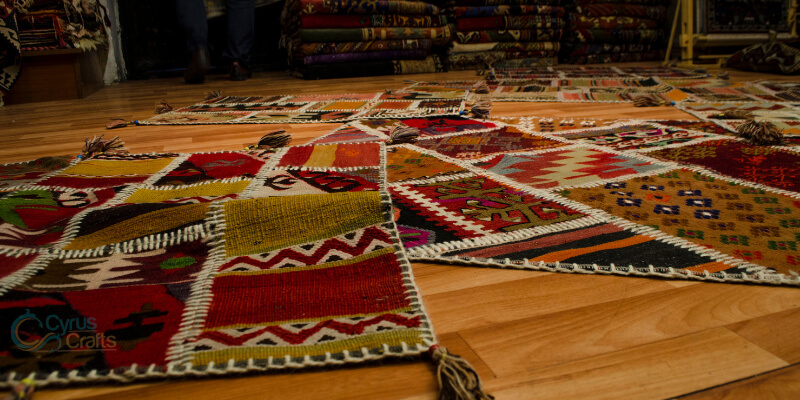
How to Select a Kilim?
Here are a few handful of critical aspects before diving into the purchase:
Kilim Quality and Authenticity
When embarking on the journey of kilim acquisition, it is of utmost importance to ascertain that you are securing a kilim of superior quality and undisputed authenticity. The market is awash with counterfeit kilims, making it vital to conduct thorough research and procure from sources of unshakeable repute.
Opt for kilims woven from genuine materials such as wool or silk, renowned for their durability and authenticity. Moreover, scrutinizes the kilim's craftsmanship, focusing on the intricacies of the weaving technique and the holistic design narrative.
Kilim Size and Placement
Before committing to a kilim, invest time contemplating your rug's size and envisaged placement. Kilims are available in various dimensions, from petite accent rugs to expansive runner or area rugs. Take precise measurements of the space you intend to grace with the kilim, ensuring the rug's proportions complement the area.
Further, reflect upon the purpose that your rug will serve. Will it command the spotlight in the room or gracefully blend with the surrounding furniture? These considerations will guide you toward determining your kilim's optimal size and placement.
Kilim Price
Another quintessential element to ponder upon is your fiscal plan. Kilims, with their rich and varied offerings, can be found in an expansive price range, influenced by aspects such as magnitude, quality, and intricacy of design.
Before embarking on your quest for the perfect kilim, ascertain the amount you are comfortable parting with. This not only helps in filtering your choices but also safeguards you from the peril of overspending. It is essential to remember that a steep price tag does not always equate to superior quality. So, stroll down the kilim market until you discover the one that harmoniously blends with your budget and aesthetic inclinations.
What Are the Differences Between a Kilim and a Regular Rug?
- Rugs and Kilim rugs differ in the type of knots and weaving technique.
- Rugs are thicker than Kilim rugs.
- The price of a handmade kilim is usually lower than that of a handmade rug. Of course, determining the price of handicrafts depends on their age, place of production, etc.
- The pattern of Kilims and other Persian rugs is different. Kilim usually has geometric and angular designs, while rugs have curves.
- Rugs have a higher texture density than Kilims. This feature has made the kilims more flexible.
- Unlike carpets, you will not have problems storing or moving a kilim. They are very light and compact.
- Kilims are usually smaller than rugs because the nomads used to weave rugs to spread in their tents, which were not very big.
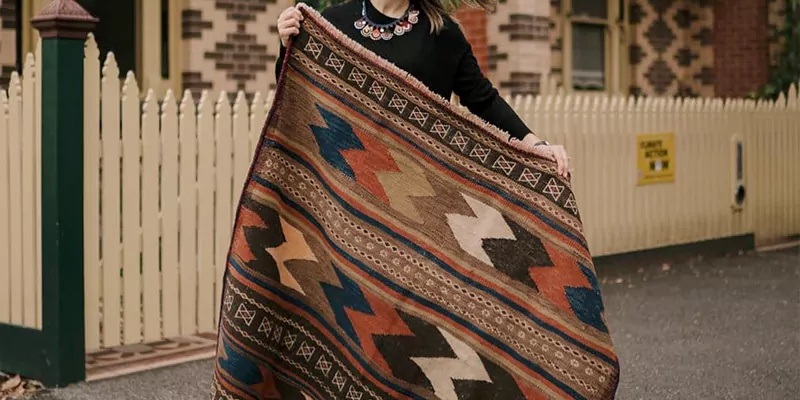
Different Types of Kilim Weaves
There are four types of kilims in terms of weaving:
Plain-weave kilims
Also known as double-sided and flat, plain-weave kilims involve "picking" in their weaving process. These kilims are thinner than the other types, have identical designs on both sides and can be used with either side up. Consisting only of warp and weft strands, some of the kilims that fall under this category are the Senah and Bijar, from Kurdistan Province, Iran; Qashqai; Semnan; Zanjan; and Ardabil.
Charkhi Weave kilims
Kilims of this type are made using a loom with four components known individually as Kaju. A set of bows moves each Kaju in the Charkhi loom. In the Charkhi weaving process, the weft passes through all the warp strands, resulting in a uniform weave. A Charkhi-weave kilim has nonmatching sides because its surplus weft threads are drawn over the back, strengthening and thickening the kilim.
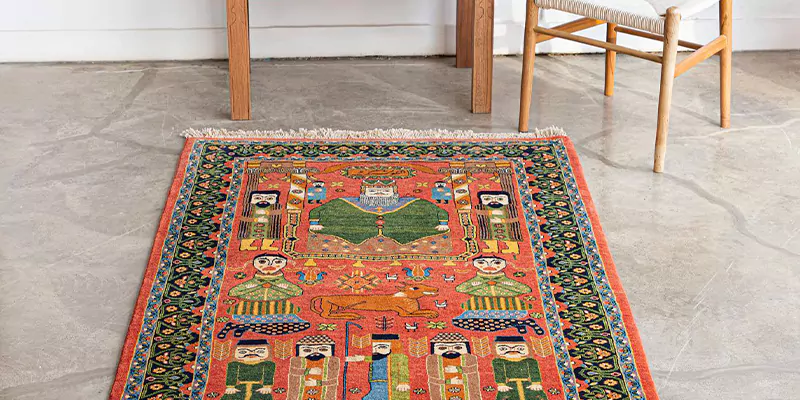
Jajim-Weave kilims
The loom used to make Jajim-weave kilims also has four Kajus and multiple bows. The main difference between these kilims and the other types is that the Jajim warp is also colored. Only the weft makes the design appear in the other weaves, whereas, in the Jajim weave, the weft and the warp do that together. Moreover, Jajim and plain kilims are similar because they have identical sides.
Needle/Soumak kilims
The loom used to make soumak kilims has a single Kaju, roughly resembling the plain-weave loom. The surplus weft threads in this type of kilims are left freely on the back, making only one side usable. Delicate and adorned with floral motifs, Sumak kilims were traditionally woven mainly by the peoples of the Caucasus. Still, since the 20th century, they have also been made in Turkey and Iran.
Persian kilims are very diverse, with every region in Iran producing kilims of distinct designs and characteristics. The regional Persian kilims are the Qashqai, Harsin, Shahsavan, Baloch, Fars, Lori, Zarand, Kurdistan, Khamseh, and Mazandaran.
A portion of Iranian kilims is exported to Asian and European countries, Canada, and the US. Cyruscrafts antique store brings further international exposure to Iran's rich art and culture by introducing and selling various Persian handicrafts, including beautiful and outstanding kilims made by Iranian artists.
Price of Kilim Rugs
Kilim rugs are produced in two machine-woven and handmade types. Different types of kilim weaving machines have various designs, colors, and prices.
On the other hand, Natural wool and non-chemical materials are used to produce and dye in handwoven kilims, increasing their cost and value. But still, they have a low price. Today, kilims and silk rugs have become modern elements in home decoration. In addition to eye-catching beauty and affordable price, they are easy to carry and wash.
At Cyruscrafts antique store, you can buy vintage rugs or modern Kilims at the best price. Kilims worth depends on the size, quality, material, weaving technique, design, dyeing, ETC. Their price can start from $50 and go up to $1300 and even higher.
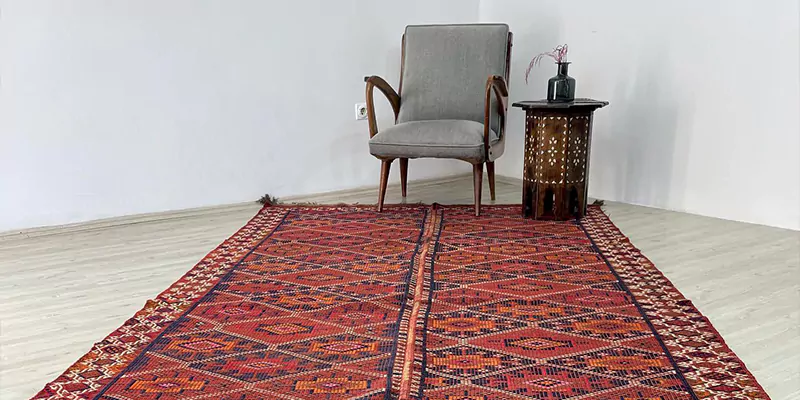
Kilim Rug Colors
The most frequent colors in kilims are red, orange, yellow, green, blue, and beige. A kilim's design and colors are determined mainly by personal preference and creativity, as no rules dictate how to use colors in kilims.
That's why they say, "Every kilim reflects the taste and character of its maker"!Today, kilim rugs are made as floor coverings for rooms and hallways and prayer rugs, tablecloths, bags, and such. Bearing gorgeous and interesting designs, kilim rugs can decorate different environments, such as living rooms, bedrooms, hotels, and traditional Persian restaurants and teahouses.
Mistakes to Avoid When Buying a Kilim
The journey towards acquiring a kilim is fraught with common errors many buyers fall prey to. By staying vigilant of these pitfalls, you can ensure a wise purchase, circumventing future regret.
Among these frequent blunders is the impulse buy – purchasing a kilim without investing time in research. Many are lured by the siren call of tempting prices or beguiling patterns, only to discover later that they've fallen for a counterfeit or inferior-quality kilim. Exploring the diverse world of kilims – their heritage and the factors- is crucial.
If you are looking for products like carpets that are light, have simple designs, and are also handmade and original, we suggest you see the Gabbeh Rugs collection.
CyrusCrafts supplies sells, and exports the finest Persian kilims to Canada, the USA, and Europe. We bring you high-class, one-of-a-kind products that will liven up and individualize your home or workplace.


